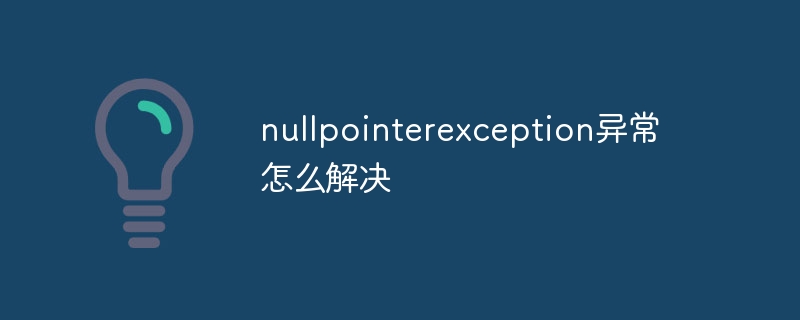nullpointerexception异常可以通过应该检查空引用,正确地初始化对象,使用默认值,使用异常处理机制和调试代码来解决。详细介绍:1、检查空引用,使用if语句或三元运算符来检查对象是否为null;2、初始化对象,使用构造函数或初始化块来初始化对象;3、使用默认值,可以为对象设置一个默认值;4、异常处理等等。

NullPointerException是Java编程语言中最常见的异常之一。它通常在程序中出现,当试图访问一个空对象的属性或调用一个空对象的方法时,就会抛出这个异常。在本文中,我们将探讨NullPointerException异常的原因以及如何解决它。
首先,让我们了解一下NullPointerException异常的原因。当我们创建一个对象,并将它赋值为null时,如果我们试图访问这个对象的属性或调用它的方法,就会抛出NullPointerException异常。这是因为null表示一个空对象,它没有任何属性或方法可供访问。
那么,如何解决NullPointerException异常呢?下面是一些常见的解决方法:
1. 检查空引用:在访问对象的属性或调用对象的方法之前,应该先检查对象是否为空。可以使用if语句或三元运算符来检查对象是否为null。例如:
if (object != null) {
// 访问对象的属性或调用对象的方法
}2. 初始化对象:在创建对象时,应该确保对象被正确地初始化。如果对象没有被正确地初始化,就会抛出NullPointerException异常。可以使用构造函数或初始化块来初始化对象。例如:
public class MyClass {
private String name;
public MyClass() {
this.name = "default";
}
// 其他代码
}3. 使用默认值:如果一个对象可能为空,并且在使用它之前没有被初始化,可以为对象设置一个默认值。这样,即使对象为空,也不会抛出NullPointerException异常。例如:
public class MyClass {
private String name = "";
// 其他代码
}4. 异常处理:如果无法避免NullPointerException异常的发生,可以使用异常处理机制来捕获和处理异常。可以使用try-catch语句来捕获NullPointerException异常,并在catch块中处理异常。例如:
try {
// 可能抛出NullPointerException异常的代码
} catch (NullPointerException e) {
// 处理NullPointerException异常
}5. 调试代码:如果无法确定NullPointerException异常的原因,可以使用调试工具来检查代码。调试工具可以帮助我们找出代码中的问题,并提供解决方案。
总结起来,NullPointerException异常是Java编程中常见的异常之一。为了避免NullPointerException异常的发生,我们应该检查空引用,正确地初始化对象,使用默认值,使用异常处理机制和调试代码。通过采取这些措施,我们可以更好地处理NullPointerException异常,并提高程序的稳定性和可靠性 。
以上就是nullpointerexception异常怎么解决的详细内容,更多请关注php中文网其它相关文章!

每个人都需要一台速度更快、更稳定的 PC。随着时间的推移,垃圾文件、旧注册表数据和不必要的后台进程会占用资源并降低性能。幸运的是,许多工具可以让 Windows 保持平稳运行。

Copyright 2014-2025 //m.sbmmt.com/ All Rights Reserved | php.cn | 湘ICP备2023035733号